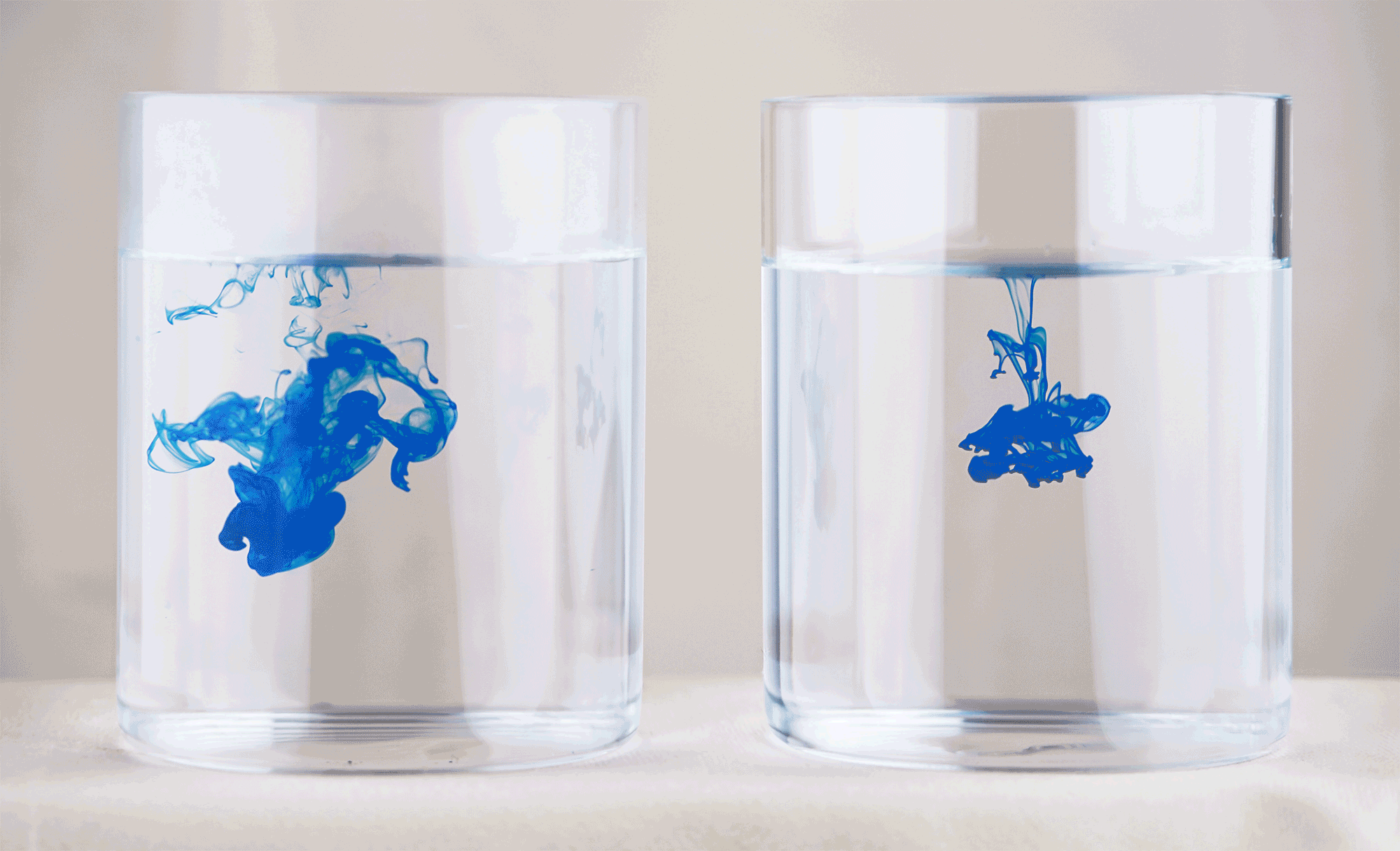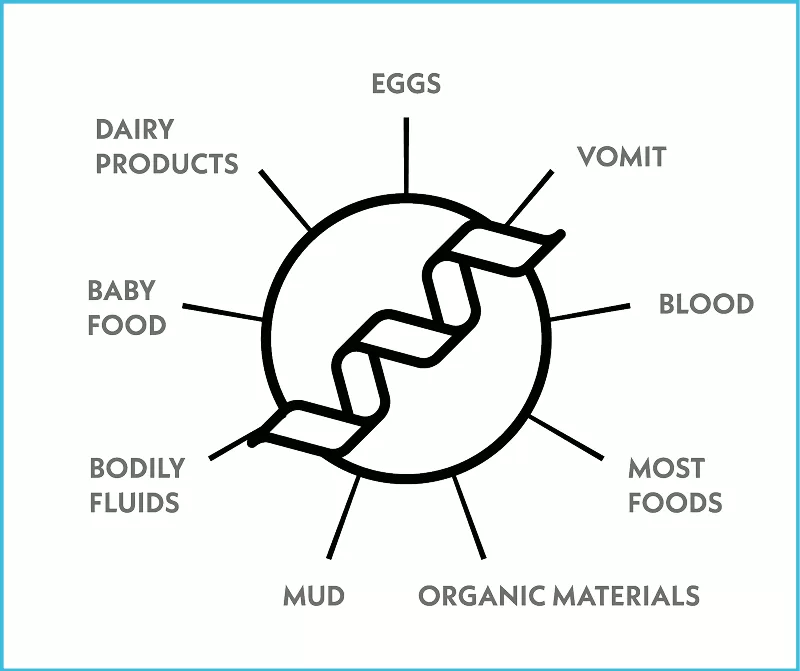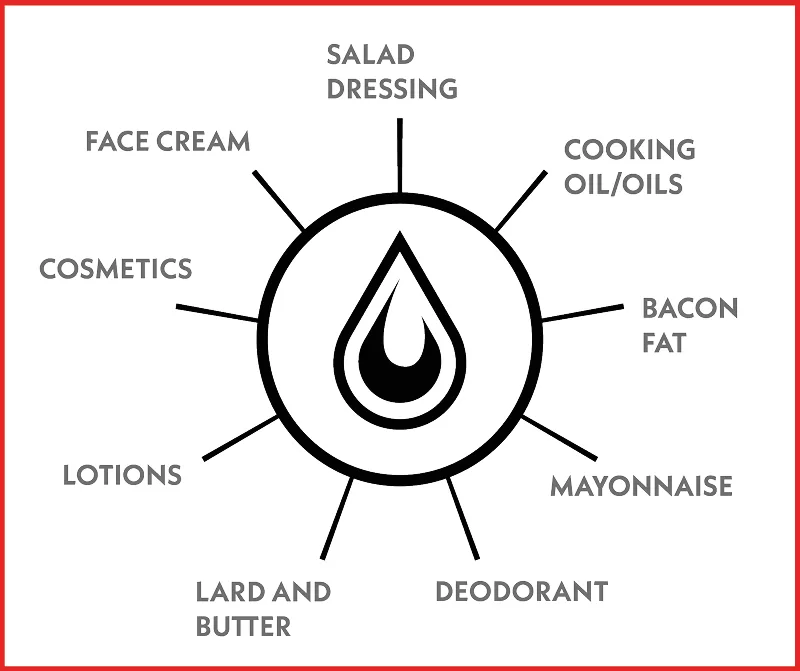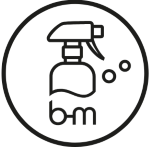Factor Temperature:
HOT OR COLD WATER FOR CLEANING?
When it comes to cleaning, the temperature of your water plays a major role in how effectively your cleaning products work. When you add heat (energy) to the mix, the water molecules become more agitated (move quickly), making the cleaner more powerful. Additionally, heat has an impact on the chemical properties of the substances you’re trying to clean. By breaking down the molecular structure of fatty substances, heat turns them into a liquid form, which is much easier to wash away. These factors make it much easier to remove tough, stuck-on stains.
Also, hot water works better at dissolving and spreading substances. This little experiment with dye standing in for dirt or detergent shows that the dye spreads much quicker in hot water (left side) than in cold water (right side).
Substance Dispersion

Hot water is also a better cleaning agent because heat lowers the surface tension and makes it a better ‘wetting agent’. Lower surface tension means the cleaning fluid expands and can reach even the tiniest of nooks and crannies. Hot water affects directly the cleaning fluid’s ability to wet a surface, and as we all know, you can’t clean something that isn’t wet!
Surface Tension


WHEN TO TURN UP THE HEAT: Hot water for cleaning
Cleaning with natural homemade solutions is quite different from using chemical commercial cleaning products. The use of Natural Ingredients combined with hot water enhances their efficiency, making them more effective and faster at dissolving and activating. Hot water is an excellent cleaning agent, particularly in breaking down bacteria and eliminating microorganisms, although it may not kill all germs, it still does a pretty good job of fighting against them.
Chemical reactions are also more efficient when using hot water, reducing the amount of cleaning solution required. Moreover, hot water is fantastic in removing oily or greasy stains, making it a versatile and practical cleaning tool.
Keep in mind:
While hot water can get rid of germs, it can also create a cosy home for bacteria and mould. To prevent these little guys from multiplying, make sure to rinse and dry everything thoroughly after using hot water.
Is using hot water green?
Well, it depends on the situation at hand. While hot water can lessen the need for harsh chemicals, it does consume more energy. If you’re just cleaning surfaces that don’t have much oil or don’t require disinfection, cooler water will do the trick for your everyday cleaning.
One excellent way to be more eco-friendly with heat is to use leftover heat by taking advantage of already existing heat and steam: Wiping down surfaces in the bathroom and microwave while they are steamed up can quickly remove dirt. Cleaning the oven while it is still hot is also effective.
Leftover hot water from boiling a kettle can be used to disinfect sponges and clean the toilet bowl or sink.

WHEN TO KEEP YOUR COOL: Cold water for cleaning.
In certain situations, using cold water for cleaning can be a better choice than hot water. This is because increasing the heat only works up to a certain point and with certain tasks and ingredients.
Using cold water is better for delicate fabrics and materials as it prevents shrinking and fading. Hot water can damage sensitive fabrics and surfaces and even cause wood to swell.
Cold water can effectively remove stains that are sensitive to heat, such as those caused by protein-based substances like eggs, chocolate, or blood. Heat tends to set in these types of stains, making them more difficult to remove.
Cold water helps maintain the effectiveness of cleaning products that work best at lower temperatures, like ammonia or bleach. For example, bleach loses its disinfecting properties when mixed with hot water, while some commercial cleaners specifically advise using cold water for optimal effectiveness.
Remember that too much heat can lead to harm to various materials and surfaces. For example, using hot water on wooden floors can cause cracks and uneven flooring over time. So, keep your cool and choose wisely when it comes to water temperature in your cleaning routine.
THE BOTTOM LINE
When it comes to cleaning, the temperature of the water can make a world of difference. You want to make sure you’re picking the right temperature depending on what you’re scrubbing, what products you’re using, and the impact on Mother Nature.
Temperature for everyday cleaning tasks

Dishes:
Washing dishes with hot water is the best way to clean and kill germs. Simply let your dishes soak in a bath of hot, soapy water to give the heat and detergent time to battle the stubborn grease and nasty bacteria. After that, a gentle scrub and rinse with lukewarm water is all you need for squeaky clean dishes.

Bathroom/Toilet:
Make use of the steam from previous hot showers or baths to loosen up the grime and kill germs. Next, grab a scrubber and cleaning product to tackle those surfaces. Once you’re done, rinse everything off with either cold or room temperature water, squeegee or wipe off the excess water, and leave the door and window open to dry. And don’t forget to turn on your exhaust fan if you’ve got one!
Hot tip – don’t toss that boiled water from your kettle! Use it to disinfect your toilet bowl instead. Simply sprinkle some Citric Acid or Bicarbonate of Soda in there, give it a good scrub, and rinse it out with the hot water for a sparkling clean bowl.

Drains:
If your sink is draining slowly or water is backing up, it might be clogged with hair, soap scum, or other debris. You can unclog it using hot water. Hot water breaks down grease and soap scum and helps flush out any blockages. Plus, it‘s safer for your pipes than chemical cleaners. Pour a pot of boiling water down the drain and wait a few minutes.

Cutting Boards:
Keep your cutting board clean and germ-free by regularly disinfecting it with boiling water. Soak the board in hot water, scrub it with a brush or sponge, and let it air dry. Do this once a week between regular washing to ensure your kitchen stays safe.

Flooring:
There’s no need to use boiling water directly on your floor to disinfect it, as it can cause serious damage to most types of flooring. Using a warm cleaning solution is ideal for a wide variety of floor types including tile and natural stone. While hot water is effective in removing stubborn stains, it can damage wood and laminate floors by causing the boards to expand and contract. Instead, use lukewarm or room temperature water to safely clean and maintain your flooring.

Windows:
Cleaning windows with hot water can remove bacteria, dirt and grease, but it can also cause streaks due to fast evaporation. It‘s better to use lukewarm water that won‘t evaporate too quickly. To avoid streaks on your glass windows and doors, don‘t clean them on a warm, sunny day as the cleaning solution can evaporate too quickly. Instead, wait for a cloudy day and use a squeegee or Microfibre Glass Cloth for a streak-free finish.
Avoid pouring hot water on glass directly as it can cause it to crack or break due to the sudden change in temperature.

Laundry:
The biggest confusion concerning appropriate water temperature in cleaning is perhaps when doing laundry!
Washing symbols:
Always pay attention to the care label when washing clothes, but remember that cold water is usually safe for any fabric. Stick to the recommended temperature on the label to avoid damaging your clothes.
When to use cold water:
Use cold water to wash natural fabrics such as silk and wool as hot water can cause shrinkage and damage to these delicate fabrics. Coloured fabrics that tend to bleed should also be washed in cold water below 30 °C. Using cold water for laundry has several advantages. It can prevent fading, reduce wrinkles, saving both, time and energy and is convenient and sustainable. It is a great option for preserving the quality of your clothing while contributing to a more sustainable future.
But if you want to go low – there are some things to consider. If you decide to wash your clothes in cold water, it‘s important to choose the right detergent. Powder detergents may not work as well, so it‘s best to use liquid detergents which are formulated for cold water. If you often wash at low temperatures, it becomes even more important to run a regular monthly maintenance wash (use Citric Acid).
When to use warm water:
To wash man-made fibres such as cotton, linen, viscose or acrylics – use warm water no hotter than 30-40 °C.
Warm water is effective for lightly soiled laundry and breaks down stains. Using warm water can also save money by extending the life of clothes and preventing wear and tear from harsh detergents. Washing at 30°C uses 38% less energy than washing at 40°C, so you make a substantial saving on your bill and help the planet.
When to use hot water:
Hot water at 60°C, unless the washing symbols indicate differently, is best for washing whites, grease-stained (not-protein-stained) or soiled clothes, bed linen, underwear and towels as it effectively kills germs and bacteria. However, some bacterial spores and viruses may be resistant to this temperature, so it‘s important to use a good detergent. You can also choose to pre-treat stains and wash at 40 °C for a great clean that‘s cost-effective. If you have stained clothes, make sure to read about stain removal and choose the right temperature for washing, as some stains tend to set in with hot temperatures.

Stains:
Spills and stains are an inevitable part of daily life, and understanding the relationship between water temperature and stain removal can save you time, energy, and frustration when dealing with household mishaps.
The best temperature selection will depend on the type of stain you‘re dealing with and the type of item you’re washing. Some stains dissolve best in hot water and others in cold. Some stains require both cold and hot water to be fully removed.
For protein-based stains caused by food or beverages such as chocolate, jam, baby food, beer, or dairy products, cold water is most effective. This is because hot water can denature or coagulate the proteins, making the stains harder to remove. Even bodily fluids like urine and blood can be successfully treated with cold water.

On the other hand, oily or greasy stains like makeup, motor oil, or salad dressing, require warm to hot water to get rid of them. The heat helps melt away the grease, which in turn makes it easier to wash away the stain.

If you encounter a stain but don‘t know what substance you are dealing with, use cold water first, in case you are dealing with a protein stain. Learn more about stain removal
